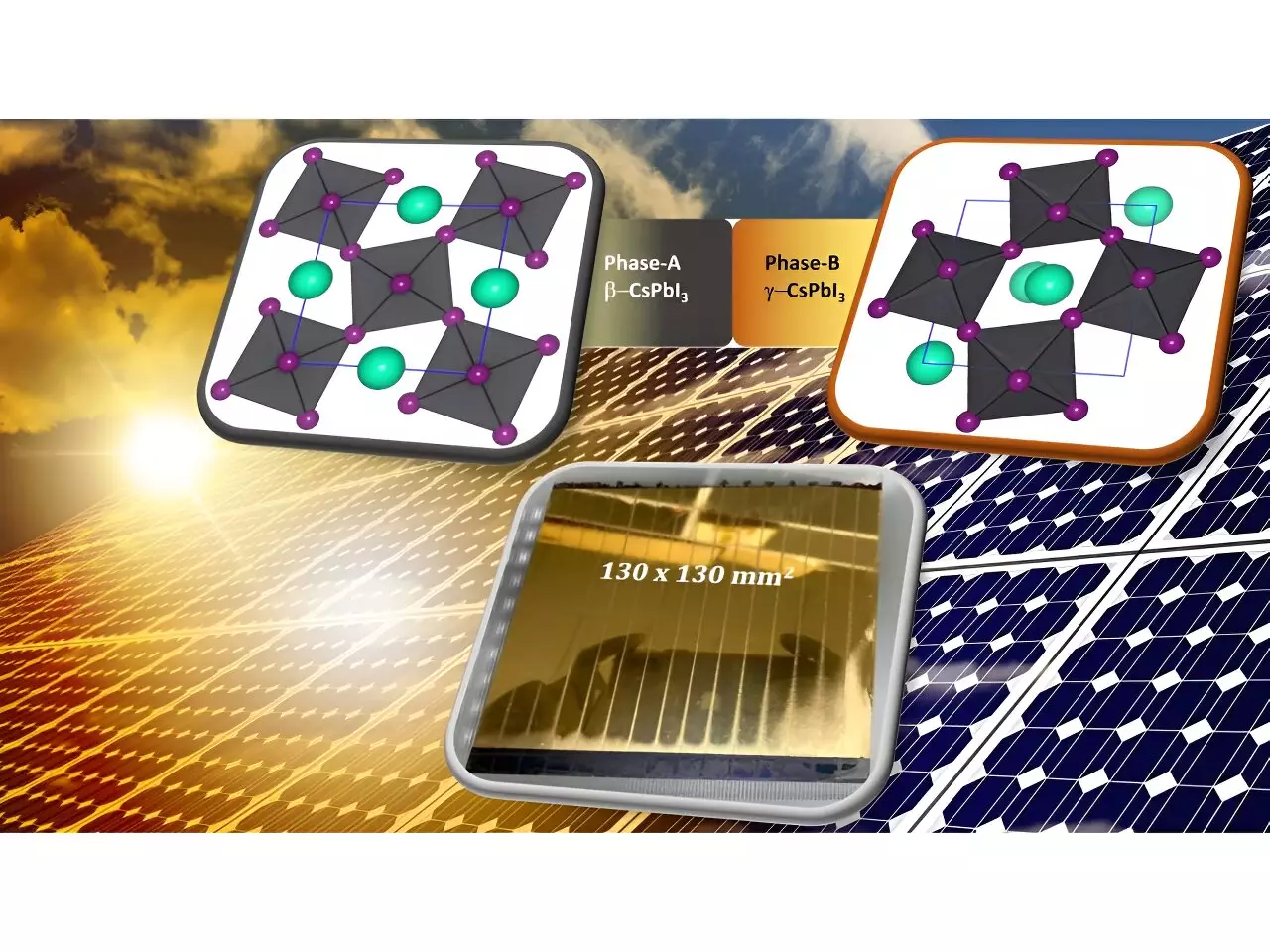Solar energy is a rapidly growing field that has the potential to revolutionize the way we generate electricity. While traditional silicon solar cells have dominated the market for decades, next-generation solar materials, such as perovskite solar cells, are gaining attention for their cheaper cost and greater sustainability. However, challenges remain in making these cells durable enough to withstand real-world conditions. Fortunately, a team of international scientists, led by Penn State faculty Nelson Dzade, has developed a new technique that could simplify the development of efficient and stable perovskite solar cells.
Perovskite solar cells are promising because they can be manufactured at room temperature using less energy than traditional silicon materials. This makes them more affordable and sustainable to produce. However, the leading candidates for making perovskite solar cells, hybrid organic-inorganic metal halides, contain organic components that are vulnerable to moisture, oxygen, and heat. Exposure to these environmental factors can lead to rapid performance degradation. To overcome this challenge, the scientists turned to all-inorganic perovskite materials like cesium lead iodide, which has good electrical properties and superior tolerance to environmental factors.
Cesium lead iodide, while promising, has multiple phases with different crystalline structures. Two of these phases are beneficial for solar cells, but they can easily convert to an undesirable non-photoactive phase at room temperature, which reduces efficiency. To tackle this issue, the scientists created a phase-heterojunction by combining the two photoactive polymorphs of cesium lead iodide. This heterojunction suppresses the transformation to the undesirable phase, resulting in improved material stability and preventing interconversion between the two phases. The coherent interface formed between the two phases allows electrons to flow easily across the device, leading to enhanced power conversion efficiency.
Impressive Results
The researchers fabricated a device using their novel approach and achieved an impressive power conversion efficiency of 21.59%. This is among the highest reported for this type of perovskite solar cell approach. The device also demonstrated excellent stability, maintaining over 90% of the initial efficiency after 200 hours of storage under ambient conditions. Scaling the design to a real-world solar module, the researchers obtained a power conversion efficiency of 18.43% for a solar cell area of more than 7 square inches (18.08 centimeters squared). These initial results highlight the potential of this approach for developing ultra-large perovskite solar cell modules.
Nelson Dzade, one of the co-authors of the study, played a crucial role in modeling the structure and electronic properties of the heterojunction at the atomic scale. The simulations revealed that bringing the two photoactive phases together created a stable and coherent interface structure, promoting efficient charge separation and transfer. These properties are highly desirable for achieving high-efficiency solar devices.
The unique dual deposition method developed by the researchers at Chonnam University in South Korea played a crucial role in fabricating the perovskite solar cell. One phase was deposited using a hot-air technique, while the other phase was deposited using triple-source thermal evaporation. Adding small amounts of molecular and organic additives during the deposition process further improved the electrical properties, efficiency, and stability of the device. The researchers believe that this dual deposition technique will have important implications for fabricating highly efficient and stable perovskite solar cells in the future.
The success of this study opens up exciting possibilities for the development of additional solar cells based on all-inorganic perovskites or other halide perovskite compositions. Further research will involve extending the technique to different compositions and making the phase-heterojunction cells more durable in real-world conditions. Additionally, the researchers aim to scale up the size of the cells to match traditional solar panels. With ongoing advancements and refinements, it is possible to envision perovskite solar cells surpassing 25% efficiency in the near future.
Perovskite solar cells hold great promise as a cheaper and more sustainable alternative to traditional silicon solar cells. The recent breakthrough in creating efficient and stable perovskite solar cells using a phase-heterojunction approach brings us one step closer to realizing the full potential of this technology. By overcoming challenges related to stability and efficiency, these advancements pave the way for the widespread adoption of perovskite solar cells as a major source of renewable energy. With ongoing research and development, we can look forward to a future powered by clean, efficient, and affordable perovskite solar energy.


Leave a Reply